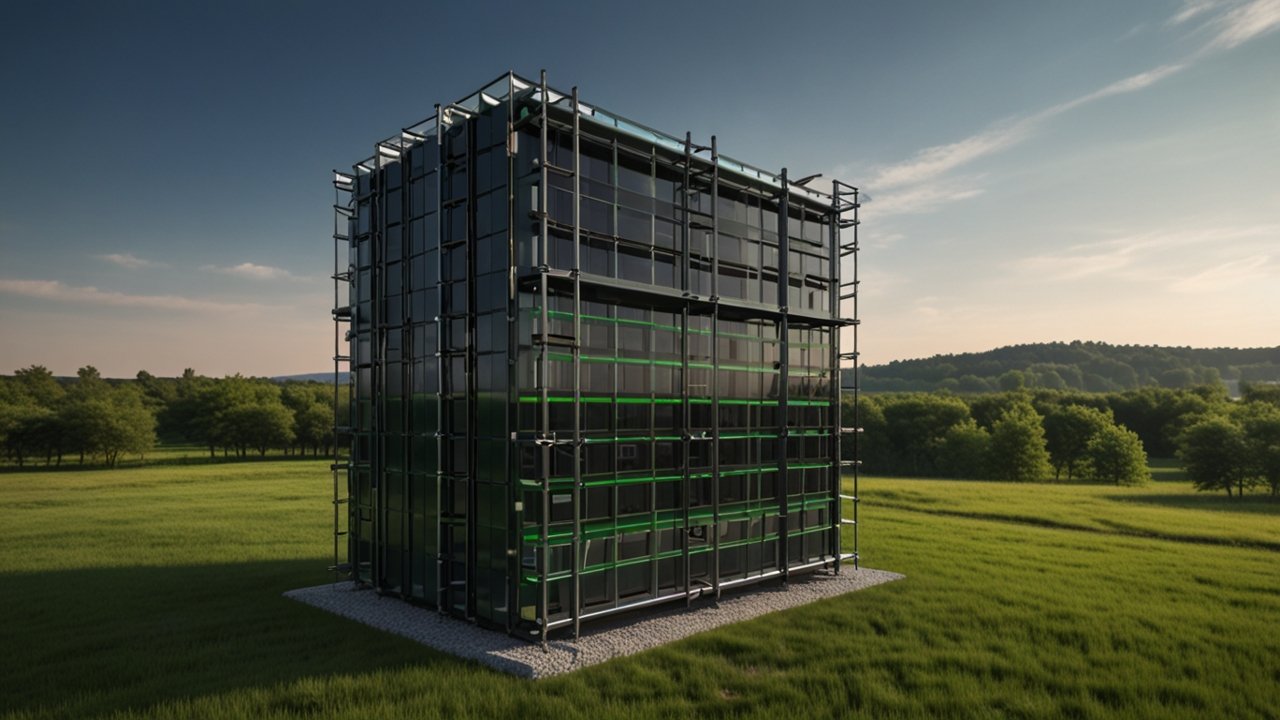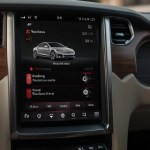Connected Vehicle Platforms: 7 Integration Systems
The rapid evolution of modern mobility has given rise to an interconnected network of vehicles and infrastructure that communicate seamlessly, ushering in a new era of safe, efficient, and intelligent transportation. Today’s transportation systems are empowered by cutting‐edge integration systems that help manage traffic, predict maintenance challenges, and even support autonomous functions. In this article, we take a deep dive into the historical evolution, technological breakthroughs, real-world case studies, and upcoming trends within these advanced infrastructure systems.
As you explore this article, you will discover how industry pioneers initiated the journey towards connected mobility and how these innovations have shaped the current technological landscape. Every section is designed to provide clear insights while inviting you to reflect on the potential of future advancements. You will also learn about the wide-ranging impact of regulatory standards and market trends that continue to drive evolution in this field.
This comprehensive overview is crafted to not only educate but also spark thoughtful discussion about the future direction of modern transport. Enjoy the exploration and feel free to share your perspectives!
📑 Table of Contents
- Introduction to Connected Vehicle Platforms
- Evolution and History of Connected Vehicle Platforms
- Smart Transportation's Role in Connected Vehicle Platforms
- Vehicle Communication Systems and Their Applications
- Real-World Case Studies of Connected Vehicle Platforms
- Automotive IoT in Modern Connected Vehicle Platforms Solutions
- Future Trends: Intelligent Mobility and Connected Vehicle Platforms
- Connected Vehicle Platforms: Innovative Horizons for Modern Transport Systems
- FAQ
- Conclusion
Introduction to Connected Vehicle Platforms
Overview and Significance of the Platform
The evolution of interconnected vehicle systems has redefined the transportation landscape. Throughout this section, we delve into how these systems merge advanced sensors, communication modules, and embedded telematics to create an ecosystem that not only enhances efficiency but also prioritizes safety. Pioneers in the field have transformed basic emergency response and navigation into comprehensive real-time analytics capable of predicting potential system failures.
This journey started with trial technologies and has advanced to systems that now process millions of data points every minute. These infrastructures now underpin various services, from remote diagnostics to turn-by-turn navigation assistance. The foundational work on these platforms shapes the backbone of modern mobility innovations.
You might be wondering how all these new functionalities ultimately affect daily travel. The integration systems are designed so that even a small improvement in data sharing or analytics can dramatically alter the journey experience. As you consider these benefits, think about how such systems could reshape your commute.
For more information on how these developments unfolded, check out the AutoConnectedCar update and learn about the timelines that guided their evolution. Also, explore insights from Smart Mobility enthusiasts who share similar visions.
Have you experienced a breakthrough in travel efficiency because of these systems? Let your thoughts flow and share your experience in the comments below.
Technological Impact on Modern Mobility
The integration of advanced digital systems into vehicles has led to unparalleled revolutionary changes in everyday mobility. Engineers and designers incorporate sensors, dedicated processors, and robust software solutions that continuously analyze driving conditions and operational parameters. These features extend far beyond mere connectivity, presenting new opportunities in predictive insights and automated support.
Modern vehicle systems are shifting from reactive to proactive methods. This is particularly evident in features like predictive maintenance where data analytics ascertain potential issues before they become problematic. This trend is echoed in areas such as automated collision alerts and dynamic route planning. Such capabilities have paved the way for safer driving practices and more efficient road management.
The ripple effects are evident in improved customer experiences, heightened safety protocols, and tangible economic benefits for fleet operations. Consider how much simpler it could be if your vehicle could warn you of upcoming repairs in advance. What implications do you see for the future when every vehicle becomes an intelligent node in a global transport network?
Evolution and History of Connected Vehicle Platforms
Milestones in the Development
The historical progression of these innovative systems dates back to when the concept of connected vehicles was first introduced. Early implementations such as GM’s OnStar in 1996 provided basic telematics and emergency response capabilities. These initial steps laid the foundation for a transformative journey in vehicle connectivity.
By 2001, advancements such as remote diagnostics and enhanced navigation began to integrate into vehicles. Notably, Audi’s introduction of 4G LTE hotspots in 2014 is one example of how these platforms have evolved. Relying on developments in wireless communications and cloud computing, theorized V2X concepts, which include vehicle-to-vehicle and vehicle-to-infrastructure communications, progressed from preliminary ideas in the 1970s to viable implementations by the early 2010s.
Such milestones are mirrored in major industry advancements documented in sources like the Wikipedia Connected Car page. Meanwhile, the evolution captured by industry experts has helped steer current implementations. Reflect on how these foundational milestones have shaped the technologies you see today.
These historical breakthroughs serve as the stepping stones for today’s advanced systems, enabling not only the technical side but also regulatory and economic support necessary for the evolution. Could you imagine a future where vehicular systems evolve even more rapidly?
Regional Contributions to Evolution
Each geographical region has contributed uniquely to the widespread implementation and evolution of these systems. In the Americas, for example, the development of OnStar and Tesla’s over-the-air updates has set a high benchmark for emergency response and remote diagnostics. These systems have been vital in establishing operational norms that have influenced global practices.
Europe’s emphasis on integrated telematics, notably through brands like BMW, Mercedes-Benz, and Audi, has also played a crucial role. The European Union’s insistence on emergency call (eCall) systems since 2018 reflects a region-wide commitment to enhanced safety measures. Japan and South Korea have contributed through pioneering V2I (vehicle-to-infrastructure) pilots focused on smart city integrations.
Furthermore, Australia’s focus on telematics not only in passenger cars but also in mining and logistics sectors has provided critical insights into large-scale fleet management. The diverse approaches across regions ensure a robust exchange of ideas and solutions worldwide. Have you noticed differences in how technology is adopted in various regions?
For more details, consider the comprehensive background found on Wikipedia V2X and reflect on the global interplay of innovations driving this field. Explore also insights from enthusiasts of Urban Transportation for a deeper understanding.
Smart Transportation’s Role in Connected Vehicle Platforms
Integration with Real-Time Traffic Optimization
The collaboration between real-time traffic analytics and advanced vehicle digital systems is a game changer. With the integration of high-speed networks like 5G, these systems can process extensive amounts of data quickly, thus optimizing traffic flow in real time. This integration has been instrumental in reducing congestion and allowing for dynamic route management.
Engineers employ artificial intelligence and machine learning to continuously analyze road conditions, vehicle speeds, and real-time sensor data. Algorithms make decisions that help divert traffic in emergencies or when unexpected road conditions occur. This not only delays potential incidents but provides more efficient journeys overall.
Historical research and modern trials have demonstrated that such integration can reduce travel times significantly while increasing overall roadway safety. For instance, real-time sensor fusion has been a core component in pilot smart city models in Europe. Can you see how such fast-paced data integration could revolutionize your daily commute?
For more information on the technical intricacies behind this innovation, refer to the BlackBerry QNX guide and learn how these systems manage traffic in real time. Also, insights from the IoT (Internet of Things) community offer valuable perspectives on improved transport efficiency.
Enhancing Emergency Response Systems
Integrating the capabilities of connected vehicle systems with emergency services has led to faster and more coordinated responses during critical events. These systems automatically transmit urgent notifications, enabling a rapid response from nearby support services. As a result, emergency management has transformed from a reactive process into a preemptive one.
Components such as eCall technology exemplify how instant data communication between vehicles and emergency centers can save lives. When accidents occur, automated crash notifications ensure that responder teams are dispatched without delay. This early warning mechanism is critical in high-traffic environments where every second counts.
The system’s effectiveness is further enhanced by modern cloud computing solutions that process data at the network’s edge. Can you imagine the potential reduction in fatality rates if vehicles could communicate emergencies instantaneously?
For additional insights, review detailed studies at GPS Leaders Evolution Connected Car and consider how this technology is reshaping emergency response protocols. What improvements would you expect from future enhancements in this area?
Vehicle Communication Systems and Their Applications
V2X Communication Systems Explained
Vehicle-to-Everything (V2X) communication is central to the modern interconnected framework. These systems facilitate data exchange among vehicles, along with communication to infrastructure, pedestrians, and even network services. By using technologies like DSRC and C-V2X, vehicles can relay essential information in real time.
This information ranges from speed and position updates to environmental alerts. The systems ensure the safe operation of vehicles in a dynamic transportation environment. Advanced sensor networks and mesh connectivity allow for robust communication between all nodes in a transport network.
The technical sophistication inherent in these systems is derived from decades of wireless communication research. How do you envision a world where every vehicle can intuitively interact with its surroundings?
For further clarity on the technical aspects, you can refer to authoritative resources such as the detailed insights provided on Wikipedia Connected Car. These systems form the bedrock of modern travel safety, demonstrating impressive reliability even under demanding conditions.
Support for Autonomous and Infotainment Functions
Beyond safety, these communications enable advanced features like autonomous driving support and enriched infotainment services. The fusion of multiple sensor data sources—such as LiDAR, radar, and cameras—creates a comprehensive view of the vehicle’s environment. This allows not only for self-driving capabilities but also for dynamic passenger experiences.
Infotainment services powered by these systems offer real-time navigation, media streaming, and voice control interactions, all of which contribute to enhanced driver and passenger satisfaction. The evolution of these features further emphasizes the practical benefits of real-time vehicular communication.
In future iterations, these integrated systems may serve as the basis for fully autonomous transport networks. Picture a world where every vehicle communicates to ensure both safety and enjoyment on every journey. What additional functions do you think these systems could support?
For more comprehensive data on these emerging functions, consult established sources like the Wikipedia V2X page. This holistic view underscores the pivotal role of communication systems in a continually evolving digital highway.
Real-World Case Studies of Connected Vehicle Platforms
Case Studies from Americas and Europe
Case studies demonstrate significant improvements brought by these advanced frameworks. In the Americas, GM’s OnStar has processed over 1 billion requests, contributing to faster emergency response times. Tesla’s innovative over-the-air update system transforms fleet maintenance by enabling immediate remote adjustments.
In Europe, BMW’s ConnectedDrive has set benchmarks in predicting maintenance needs and alleviating congestion. Moreover, Stratio Automotive’s application of predictive analytics has reduced fleet breakdowns by integrating robust data monitoring techniques. These examples reveal a clear trend in how established companies are leveraging these frameworks to enhance rider safety and operational efficiencies.
The success seen in one region often influences global practices. How do these success stories inspire improvements in your local travel experiences? For more in-depth case studies, you might find details on the AutoConnectedCar update page compelling.
Exploring these case studies exposes the tangible benefits of integrating real-time analytics, data-driven maintenance, and remote service capabilities. What challenges do you think remain to be addressed for even greater improvements?
Additionally, enthusiasts of Digital Transformation can learn more about the cross-industry impacts of these innovations.
Comprehensive Comparison of Case Studies
| Example | Inspiration | Application/Impact | Region |
|---|---|---|---|
| GM OnStar | Early Telematics | Reduced emergency response times | Americas |
| Tesla OTA Updates | Remote Diagnostics | Improved fleet maintenance | Americas |
| BMW ConnectedDrive | Embedded Telematics | Proactive maintenance and navigation | Europe |
| Stratio Automotive | Predictive Analytics | Fewer breakdowns, cost reduction | Europe |
| Toyota V2X Trials | 5G-Enabled Test | Enhanced collision avoidance | Asia |
Global Success Stories in Asia and Australia
In Asia, success stories shine through with initiatives by Toyota and Hyundai. Toyota’s trials with 5G-enabled systems, for instance, demonstrated robust collision avoidance and emergency alert features. Similarly, Hyundai’s integration of remote diagnostics and traffic management systems has set a benchmark for market-wide innovation.
Australia has embraced these technologies with an emphasis on fleet management in mining and logistics. The integration of telematics has increased safety compliance and optimized operational efficiency for large-scale transport fleets. Such achievements are transforming not only passenger vehicles but commercial and heavy industries as well.
By looking at these examples, it’s evident that localized innovations can have far-reaching global impacts. Could these success stories drive future investments in similar technologies across continents?
For additional context and technical details, further reading is available at the Avnet communications guide. These developments invite you to explore how your region could benefit from similar innovations.
Automotive IoT in Modern Connected Vehicle Platforms Solutions
Technological Advancements in Embedded Telematics
Embedded telematics are a core aspect of these vehicle systems. These solutions utilize SIM cards and eSIMs to enable constant connectivity between vehicles, edge devices, and cloud services. Such advanced components are crucial for driving real-time updates and dynamic analytics.
Innovations in sensor technology and mobile communications have allowed vehicles to continuously exchange data, not only for mapping and navigation but also for predictive diagnostic purposes. These advancements have catalyzed further research, leading to faster over-the-air updates and consistent data security measures.
By integrating these systems, manufacturers are now capable of implementing continuous monitoring and remote troubleshooting. How might these ongoing innovations alter your expectations for vehicle reliability in the coming years?
For more information, explore how embedded solutions underpin modern designs on emerging technology sites and resources, as well as perspectives from the Future Transport Solutions community.
Predictive Maintenance and Fleet Management Analytics
Modern diagnostics and predictive maintenance have transformed fleet operations by using real-time data analytics. Through remote diagnostics and AI-based failure prediction, these solutions help operators anticipate mechanical issues before they escalate. This reduces downtime and prevents costly breakdowns.
Large fleets benefit from analytics that forecast maintenance needs, optimize routes, and manage resources effectively. Companies are now deploying cloud-based analytics platforms that aggregate data from thousands of vehicles, ensuring proactive rather than reactive maintenance strategies. What improvements in efficiency could you envision if such predictive measures were widely implemented?
Advancements in these areas have been critical in fostering a safer driving experience across various sectors. For additional technical insights, you may refer to industry articles and thought leadership that outline the roadmap for these next-generation solutions.
Future Trends: Intelligent Mobility and Connected Vehicle Platforms
Projections and Emerging Technologies
Looking ahead, current trends suggest that within the next decade nearly every new vehicle in developed regions will be interconnected. Technological projections indicate that ultra-low-latency networks such as 5G and emerging 6G technologies will further enhance data transfer speeds and system reliability.
Integration of edge AI, blockchain, and sensor fusion technologies is expected to drive even more innovation in this domain. These advancements are likely to catalyze the evolution of autonomous functions while simultaneously supporting high-level infotainment and personalized user experiences.
In parallel, predictive insights and remote troubleshooting partnerships are shaping the future of vehicle maintenance and operational excellence. As more advanced algorithms emerge, the efficiency, safety, and comfort of modern transportation systems will improve significantly. What emerging technology do you find most promising for future mobility?
For additional context, well-documented market studies and external analyses illustrate that global adoption rates will continue rising. Engage with additional readings from industry sources to deepen your understanding and predict what new challenges may arise.
Standardization, Regulations, and Market Penetration
Regulatory frameworks are evolving rapidly, adapting to the fast-paced development of these systems. Key regions like the EU, US, China, and South Korea have implemented guidelines ensuring data privacy, cross-border interoperability, and cybersecurity protocols that underpin these highly interconnected systems.
The adoption of standard protocols such as DSRC, C-V2X, and shared cloud infrastructures is paving the way for harmonized operations worldwide. As these standards mature, vehicle manufacturers and technology providers are expected to pay further attention to latency, reliability, and system security.
Market projections indicate that global penetration will continue to grow, with investment in these systems reaching multibillion-dollar levels by the late 2020s. How do you think regulatory initiatives will influence the pace of technological adoption in your region?
Consult detailed regulatory insights available in industry forums and standardization bodies to understand how market conditions might evolve, and consider the influence of public policies on future developments.
Connected Vehicle Platforms: Innovative Horizons for Modern Transport Systems
This engaging section offers an overview that stimulates curiosity about the technological breakthroughs in advanced mobility systems. As research unfolds, dynamic digital networks steadily integrate with everyday travel, facilitating improvements once thought unattainable. This modern marvel of transportation harnesses data processing, rapid networking, and smart analytics to create an ecosystem where efficiency and safety work hand in hand. Consider how groundbreaking infrastructures pave the way for innovations in navigation, precise route mapping, and preemptive maintenance protocols.
Innovations in these frameworks have progressively diminished unexpected downtimes, creating safer travel corridors and reducing travel congestion with precision strategies. Early adopters now reap the benefits, and the ripple effects are visible in streamlined job efficiencies and happier customer interactions in everyday travels. The continuous refinement of these systems promises transformative operational strategies that optimize travel experiences by constantly updating information and providing real-time responses to roadway changes.
As this narrative continues, one can fully appreciate the high level of interconnection and data integration that modern transport has achieved. The journey from conceptual ideas to real-world applications has not only reshaped infrastructure but also redefined user expectations. This perspective leaves readers with a sense of anticipation—knowing that each new advancement will open unexpected doors to even more efficient travel solutions. Ultimately, future insights in this sector will continuously set new benchmarks in reliability and innovation.
The horizon of technological progress now beckons, encouraging a proactive approach to the challenges and opportunities that lie ahead. Every breakthrough further signals the promise of a well-connected, intelligently orchestrated mobility ecosystem.
FAQ
What are Connected Vehicle Platforms?
Connected Vehicle Platforms are integrated systems that enable real-time communication between vehicles, infrastructure, and cloud services. They support functions such as emergency response, predictive maintenance, and advanced driving assistance systems.
How did these platforms evolve over time?
The evolution began with early telematics services like GM’s OnStar in 1996. Over time, with advancements in wireless networking, cloud computing, and sensor technology, these platforms have grown to incorporate V2X communication, predictive analytics, and advanced user services.
Which regions have been most influential in their development?
Regions such as the Americas, Europe, and Asia have all contributed significantly. The Americas introduced early systems like OnStar, Europe emphasized integrated telematics and regulatory frameworks, while Asia has led in smart city pilots and rapid technology adoption.
What future trends are expected in this area?
Future trends include the adoption of ultra-low-latency networks like 5G/6G, integration of edge AI, blockchain for secure data exchange, and more advanced autonomous driving features, ensuring that these platforms become even more efficient and reliable.
How do these platforms impact everyday commuters?
By offering real-time traffic optimization, predictive maintenance alerts, and dynamic emergency response features, these systems enhance safety, reduce travel times, and improve the overall travel experience for commuters.
Conclusion
As our exploration reveals, the revolution in vehicle connectivity is more than just a trend—it’s a fundamental transformation of how we move. From historical milestones to global case studies and emerging future trends, every aspect of these systems highlights the pivotal role they play in shaping tomorrow’s mobility landscape. The integration of advanced technologies in these solutions ensures enhanced safety, improved efficiency, and greater convenience for drivers and fleet operators worldwide.
We invite you to reflect on the impacts these innovations might have on your daily commute. Have you experienced any changes or seen local improvements? Your insights matter, so please share your thoughts and experiences.
For more information on the latest developments in transformative mobility, visit Future Mobility. If you have further questions or ideas to discuss, feel free to Contact us.
What exciting future do you envision for the next generation of vehicular connectivity?




















Leave a Reply